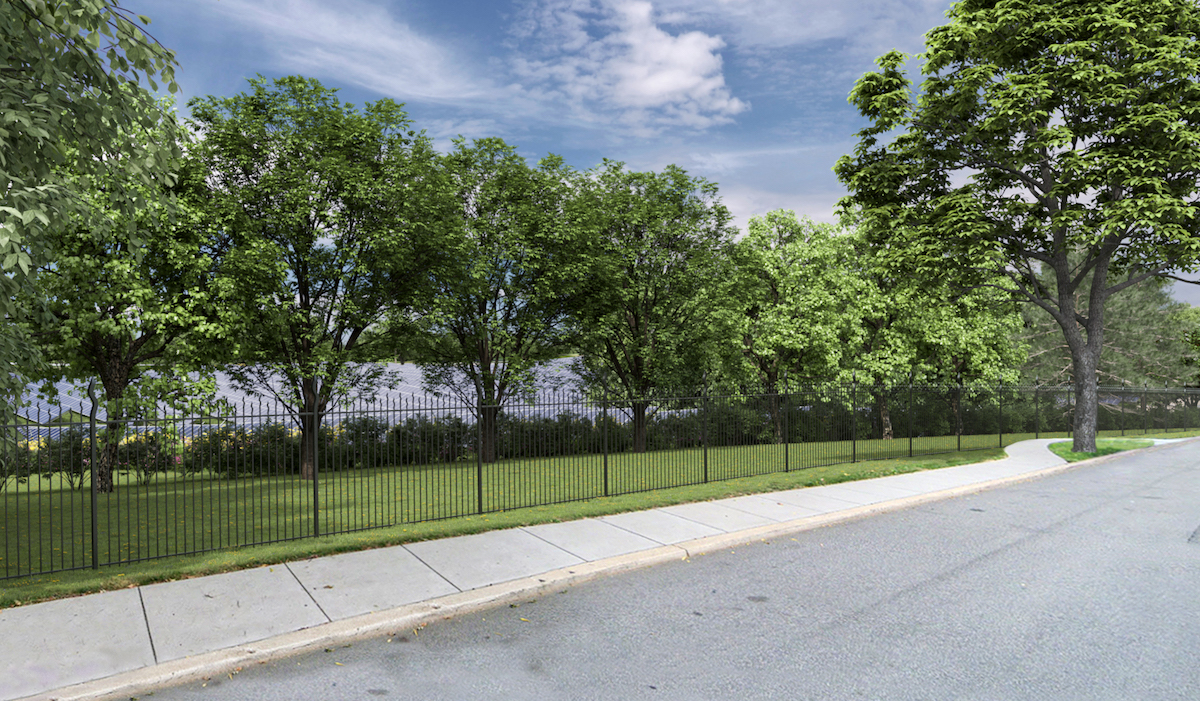

Groundbreaking for the region’s largest urban ground solar array, located on Catholic University’s West Campus, will start on Aug. 22.
The ground-mounted solar array, being installed on the west side of Harewood Rd., across from Leahy Hall, will greatly contribute to the University’s commitment to environmental sustainability and make a significant contribution to the District of Columbia’s goal of 100% renewable energy by 2032 and carbon neutrality by 2050. Permitted tree removal will take up to four weeks, but will not affect heritage trees on the site or the existing Casey Trees’ tree nursery.
The solar array, which is being developed with Standard Solar, will save an estimated 7.115 metric tons of greenhouse gas emissions per year. This is the equivalent of removing 1,547 cars from roads annually or eliminating the carbon dioxide emissions from nearly 800,630 gallons of gasoline, according to the EPA Greenhouse Gas Equivalencies Calculator.
"The new solar installation reaffirms the University’s renewable energy leadership. By caring for our common home, this new opportunity allows our neighbors to share clean energy benefits," said Alexandra Harry Nappier, director of campus sustainability for the University.
The University has arranged for many of the trees being removed to be salvaged by the District of Columbia's Urban Forestry Division. The logs will be milled into items such as benches and stump seating that then will be donated to local schools and parks. Wood byproducts will go to the University of the District of Columbia’s Center for Urban Agriculture and higher quality wood will be milled into lumber and donated to schools and nonprofits.
The University will use wood chips from the trees at the Community Garden behind Curley Hall and within the preserved forests on the west campus to help suppress invasive species and improve the habitat. Casey Trees will also use the chips for its Community Tree Planting program.
“Harvesting and repurposing these trees locally lessens the waste and cost of disposal and helps reduce the city's reliance on lumber transported from elsewhere, reducing emissions and supporting our local communities,” said Greg Osband, the University’s program manager for landscape architecture.
The next step after tree removal is grading and installation of bioretention facilities for stormwater management. This will take place over three months this fall. Once the site is prepared, installation of the solar racks is scheduled to begin at the start of 2023. The array, which will be surrounded by a perimeter screen of trees and pollinator habitat plantings, is expected to open in late summer 2023.
The array is one of many initiatives focused on environmental stewardship. Also this year, the University, a certified Tree Campus for Higher Education, undertook a tree survey and is developing a plan for ongoing management of all trees on campus.
In September the University will submit its Laudato Si’ Action Plan to the Vatican. Catholic University was one of the first universities in the world to sign onto this Vatican initiative to encourage care for creation globally.